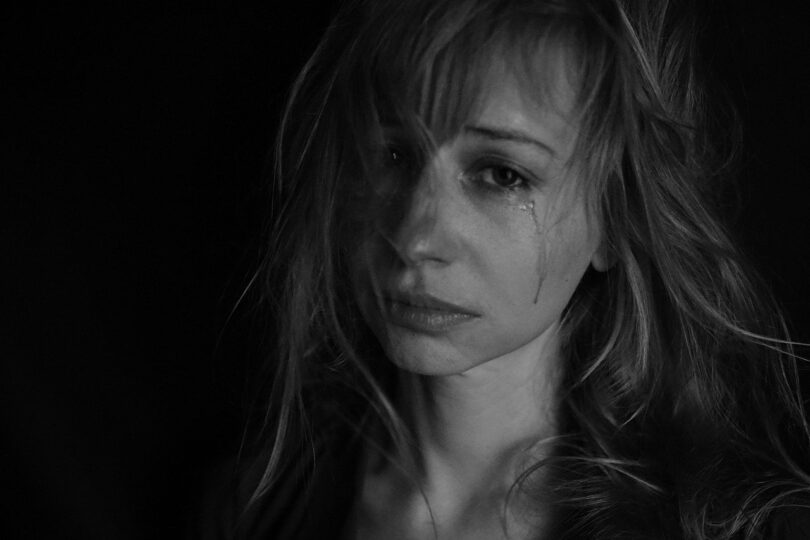A mother of two young children has fingerprint-size bruises on both sides of her neck and has trouble swallowing from being strangled by her husband of 11 years; the incident was witnessed by both children. Apparently, she was seated next to his coworker at an office event and must’ve been flirting.
Even though Stephanie has to get ready for work at 6:30 a.m., her boyfriend regularly keeps her up to have sex until the early hours of the morning. The sex sometimes gets rough and Stephanie has marks on her stomach and the inside of her thighs.
Michelle threatens to take their children to Maryland to live with her family if her husband looks into getting a divorce for her drug use ― she has lashed out at him before and left scratches across his face and chest.
In all these cases, before the court or in just speaking with friends, most would agree that any time a person lays hands on someone with the intent to cause physical harm, it is clearly abuse. There are bruises, broken bones, swollen eyes and dislocated shoulders to show what has happened.
Abuse Isn’t Always Visible
But what about the other side of abuse? The part where there aren’t any visible signs? The abuse that keeps a victim convinced that she is the problem, or that he caused the anger. Abusers are adept at manipulating the truth and making the victim feel guilt and shame, or making them believe that in some way, they were the cause of the abuser’s outburst. All abuse is ultimately about having power and control.
The conditioning doesn’t happen overnight. It’s often an unconscious attraction that becomes a dance between the two parties. Abusers choose vulnerable partners who are in turn attracted to what the abuser initially gives them in the way of love, attention, excitement, emotional/financial support, a welcome boost of self-esteem ― often things missing from their own childhood. After a few weeks, a couple of months or literally the day after getting married or moving in together, the abuser shows their true colors and unfortunately the victim ― having not seen or disregarded the red flags ― is already hooked.
The fact is, there was a gaping hole of need in the victim’s chest where now the abuser dwells. Humans are seduced by selectivity ― we don’t usually ask ourselves why someone is flooding us with attention, we just like the way it feels.
Verbal Abuse is Still Damaging
For the victim, the loneliness disappears because the need appears to have been filled, but there is now a recognition of a conflict of opposing feelings arising as a result. Common thoughts might be:
- Someone finally loves me.
- It feels good that I have found someone who “gets” me and fulfills my needs.
- She puts me down and calls me names, but she did have a hard day at work and I forgot to pick up her dry cleaning.
- It hurt when he punched me but he says he is sorry and that he loves me and will never do it again.
- I miss going out with friends, but she thinks we should do everything together and I don’t want to make her angry.
- My family is dysfunctional, so he is right in wanting me to stay home more and not see or speak with them.
In an unhealthy relationship, the emotional and verbal abuse is the constant. It’s often hard to explain in words to others because it needs to be experienced in the moment. This abuse doesn’t leave visible marks on our bodies like physical abuse. Rather, it’s the overshadowing dark, third person in the relationship that is always lurking around. It makes a person walk on egg shells so no one gets upset. It makes you think that it’s your fault or that you’re crazy. It lets you believe that the jealousy is okay because he loves you.
Coming Out on the Other Side of Abuse
When I talk about verbal and emotional abuse with my clients, they are often shocked to see that the parameters that govern their relationship are both so insidious and also common to other victims experiencing the same kind of abuse. They are relieved to finally have the words to be able to pair with the conflicting emotions they have been feeling for so long. They’re also relieved to know that the abuse isn’t all in their head.
However, that’s only the beginning. Discovering and working through the root of why we are attracted to someone who abuses us takes courage, dedication and time. Reprogramming our minds to see things differently as a person looking from the outside-in takes work and learning to depersonalize the experiences. But it’s why counselors and therapists exist ― to let us help you help yourself.
For more information about verbal and emotional abuse, check out the Power & Control Wheel. Need help finding someone to talk to? Visit Psychology Today.

